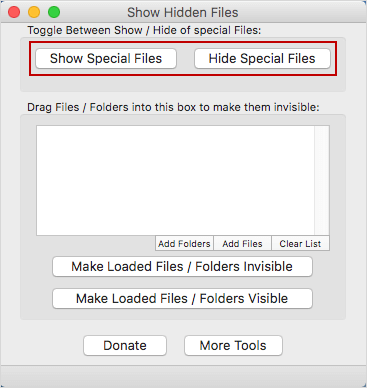

Click on each folder that you want to (re)sync and then click on the green ‘Subscribe’ button on the top left.

There, you’ll see all of your iCloud email folders, including the ones that are missing in your email display. On the top bar of Outlook for Mac, click on the “Tools” dropdown.
#Show hidden folders in outlook for mac for mac#
You need to make sure each of your iCloud email subfolders are properly synced in Outlook for Mac for them to show up. The answer has to do with syncing your IMAP Folders. And happily, I didn’t have to go too far down the rabbit hole. I decided to do some Googling for a less dramatic solution. Instead I took a deep breath and put on my Tech Zen hat. I immediately thought of the nightmare of having to delete Outlook for Mac and then rebuild my email all over again on my iMac.
#Show hidden folders in outlook for mac software#
So, I knew I had some kind of sync issue that my computer or the software had thrown at me. (I’ve been using Outlook for Mac on my iMacs for years.) I could see them on my iPhone’s native Mail app, but not in Outlook on my iMac. They just weren’t showing up in my Microsoft Outlook for Mac. Well, these subfolders weren’t exactly gone. I thought I had lost all of my iCloud email subfolders I had created under my ‘Inbox’ to help keep my email organized… That said, I did feel like my world was at risk of imploding. No, there weren’t any global implications. Recently I had what felt like a similar experience with my own computer. Remember that line from the 1983 movie, “WarGames,” starring Matthew Broderick? That playful computer certainly caused a lot of trouble! If still, your Outlook folders have not reappeared, the last method will be your salvation.Do you sometimes feel like you need a magic wand to handle your computer glitches? Here’s my story about how I fixed my subfolder syncing problems in Outlook for Mac. This application, after scanning, will fix all the problems. Now, in the new window that pops up, enter the path (location) of the SCANPST.exe folder and click the Start button. Next, launch the Microsoft Outlook Inbox Repair Tool (it can be downloaded from the official Microsoft website). On drive C, find the location of the SCANPST.exe file. This can be fixed using the special application that will be discussed now. Try SCANPST.exe to solve the errorĪ damaged or non-existent SCANPST.EXE file can affect the unsuccessful execution of the running process that is, searching for and opening the necessary Outlook file. If everything is in order with this panel, proceed to the next rescue method for dealing with the Outlook folders missing issue. There is an even simpler option: At the top in the folder panel area, there is an arrow click on it with the mouse and the panel will immediately appear. From the list, select Normal and the folder panel will be displayed on the left-hand side of the screen. You can display the panel using the Toolbar item on the View menu.

Sometimes, this pane is hidden and you are not able to view all available folders. By default, it contains three groups of shortcuts: Outlook Shortcuts, My Shortcuts, and Other Shortcuts. The pane on the left contains folder shortcuts through which the user can navigate from one folder to another. Next, activate the option "for mailboxes and their subfolders." Finally, click OK.Īfter that, restart the application and try to open a previously non-opening folder. Click on “Apply current view to other mail folders”. Go back to the “View” dialog box, then select “Change View”. In the new window, select the “Reset View” button and then click OK. On the taskbar, click "View”, then select “Change View”. This can help get rid of the Outlook folders missing problem.įirst, open the application. This article will talk about simple and complex methods for fixing the Outlook folder disappeared error and recovering Outlook data. The appearance of the error “Outlook folders missing” and the inability to open email archives results in headaches for users, administrators, and technical support services. A fairly large number of Outlook users have, to one degree or another, encountered problems opening PST files due to their damage. User data is stored in OST and PST files. About the “Outlook folders missing” issueĬertainly, Microsoft Outlook is a leader in the sector of corporate email clients on desktop PCs.


 0 kommentar(er)
0 kommentar(er)
